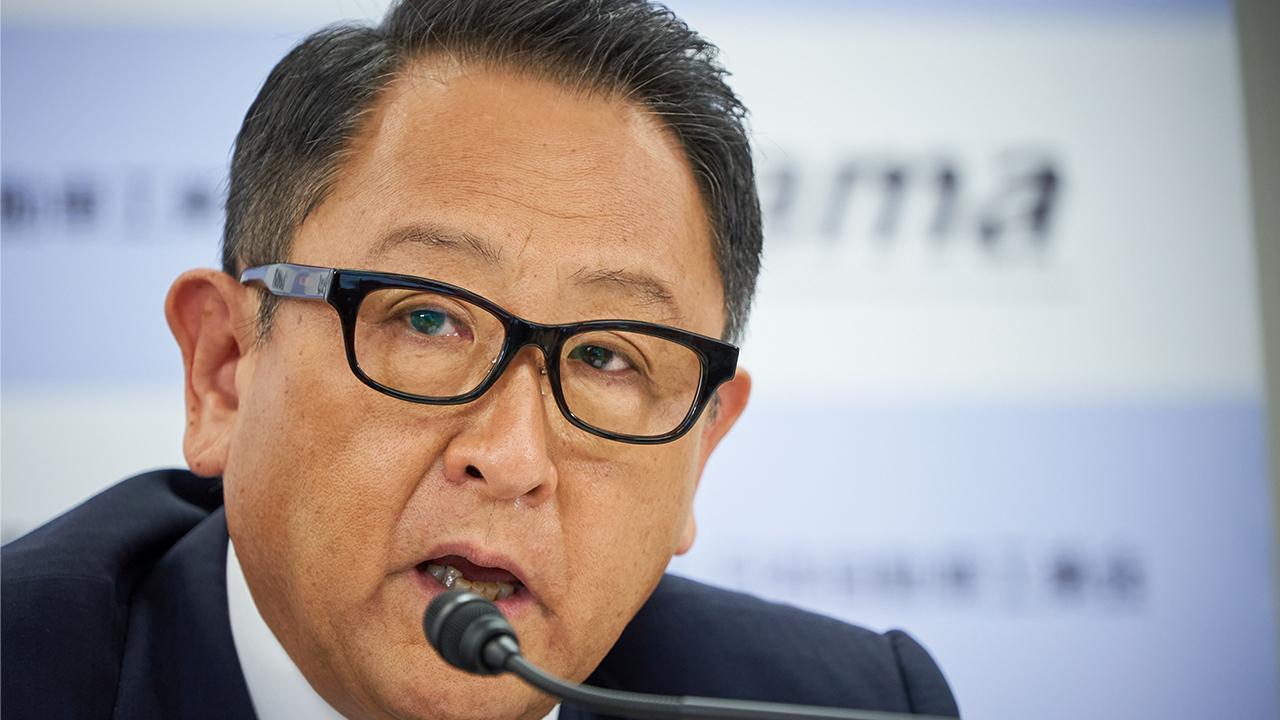
For three years in his current role as JAMA chairman, Akio's actions have always been based on "missions" to contribute more, as the automotive industry, to the future of Japan. Such missions have driven many others in the industry during the crisis over the past year.

On June 3, the Japan Automobile Manufacturers Association (JAMA) held an online press conference. Joining Chairman Akio Toyoda were Vice Chairman Yoshihiro Hidaka (president of Yamaha Motor Co., Ltd.), Vice Chairman Masanori Katayama (president of Isuzu Motors Ltd.), and Vice Chairman Seiichi Nagatsuka.
It has been three years since Akio took office as chairman for the second time. During the press conference, he talked about the importance of being driven by missions as shown in the changes in these three years, including industry-wide actions taken in response to the COVID-19 pandemic, and how that continues to be significant going forward in achieving carbon neutrality.
Realizations through the Tokyo Motor Show
In 2018, when Akio took office as chairman of JAMA, the automotive industry was at a major crossroads. Visitors to motor shows, not only the one in Tokyo but all over the world, were on the decline. Amid such, there was one mission Akio gave to everyone at the genba planning Tokyo Motor Show 2019.
JAMA Chairman Akio Toyoda
Six months have passed already in 2021 and more than a year has passed since the COVID-19 pandemic started to fully impact our lives.
During this time, as we have overcome several crises, I have felt firsthand that, everything we have done in my three years as the chairman of the Japan Automobile Manufacturers Association (JAMA) has been connected.
I was appointed JAMA chairman for my second term in May 2018. At the time, the automotive industry had entered a once-in-a-century period of profound transformation brought about by the Connected, Autonomous, Shared, and Electrification (CASE) revolution.
Under such an environment, I believe people had started to question if the Japanese automotive industry can really play a central role in a future mobility society, and one such symbol representing the challenge was the Tokyo Motor Show that had been experiencing a continual decline in the number of visitors.
That’s why, as JAMA chairman, I suggested the idea of planning an entirely novel future mobility show. I gave the planning team only one mission. That is to get visitors to experience the fun of future mobility and current cars, and to put smiles on their faces.
With this mission in mind, everyone in the genba started sharing their knowledge and coming up with many new plans.
Having changed our approach so significantly, there was opposition in the beginning. However, thanks to the hard work of many people, we were able to put smiles on the faces of 1.3 million visitors, surpassing our original target of 1 million visitors.
“If we take action with determination, we can make a difference”-the many people involved in the Tokyo Motor Show, including myself, experienced and realized this important principle.
Times of crisis demand a clear mission
Akio then went on to talk about the organizational reform of JAMA. While some people might think that industry associations exist only for lobbying activities based on their own interests, Akio explained that the mission and raison d'etre of the current JAMA lie elsewhere.
Akio
This experience led to the organizational reforms to JAMA. I wanted JAMA to be an organization that can uphold and put into practice the mission of serving the automotive industry and Japan, regardless of who the chairman is. Based on this thinking, we launched the reforms within JAMA.
Soon after we started to deepen such discussions, the COVID-19 crisis struck all of us. I think JAMA was able to take action quickly, believing that “we’ve got to do our part right away.” We immediately reached out to other automotive associations, and our five associations came together as one to overcome this crisis.
Protecting the people that sustain Japanese manufacturing, and driving the economic recovery during and after the crisis-sharing these two missions of the automotive industry, the people in the genba started to take action.
Furthermore, these actions expanded to the movement of all 5.5 million people in Japan’s automotive industry overall, not just to those who make and sell cars, but including members from other industries such as energy, logistics, and transportation.
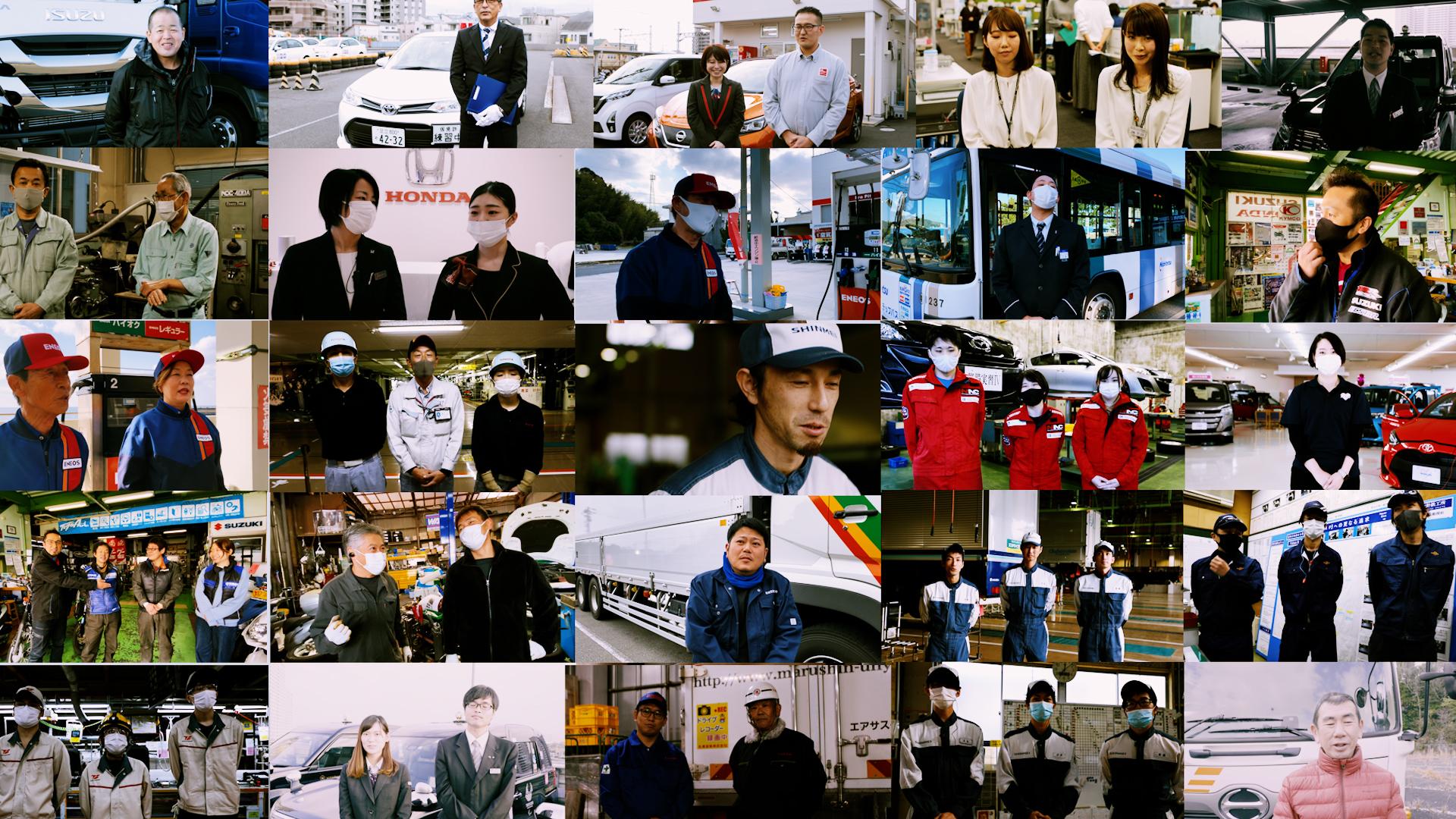
Over the past year, the COVID-19 pandemic was not the only crisis we have faced. There were repeated natural disasters, fires at semiconductor factories, and other such occurrences that had a huge impact even on the Japanese economy.
When I visit the genba confronting crises, there is one thing that I always realize: not a single one of these people there is working for their own benefit. They give absolutely all of their energy to protect Japanese manufacturing.
It was no different this time. As JAMA chairman, all I have done was to present a way forward.
Thanks to many colleagues in the industry, who have shared the mission and continued to work so hard across different companies and sectors, the sales and production of automobiles in FY2020 has recovered more quickly than expected.
As a result, the automotive industry expectedly generated an economic impact and ripple effects amounting to 49 trillion yen. Not only have we protected employment, but we have created 120,000 jobs during the period.
Over the past three years, I have been convinced that it is the people who are driven by missions and taking action in the genba who have supported and strengthened the automotive industry. I believe that is exactly why we were able to change the reality [during this period of crisis] as I continuously showed our mission of the time.
Even as president of Toyota Motor Corporation, Akio has said that the kind of leadership required in this disrupted era is not one of coordination with nemawashi (laying the groundwork) but one of driving people to “gather around”. His consistent stance has been that a better future can only be realized through showing the direction to take and working together with like-minded colleagues.
It is because of this shared mission that five automotive organizations were able to quickly unite during the COVID-19 crisis, leading to 5.5 million people facing the same direction and taking action. Such power has become the driving force for overcoming the crisis.
Many excellent technologies have yet to fully blossom
The focus of his remarks then turned to carbon neutrality.
Akio
Our next challenge is carbon neutrality. Moving forward, I believe the key remains the same: it is not only showing target figures or regulations, but the will, passion, and action to achieve carbon neutrality, no matter what.
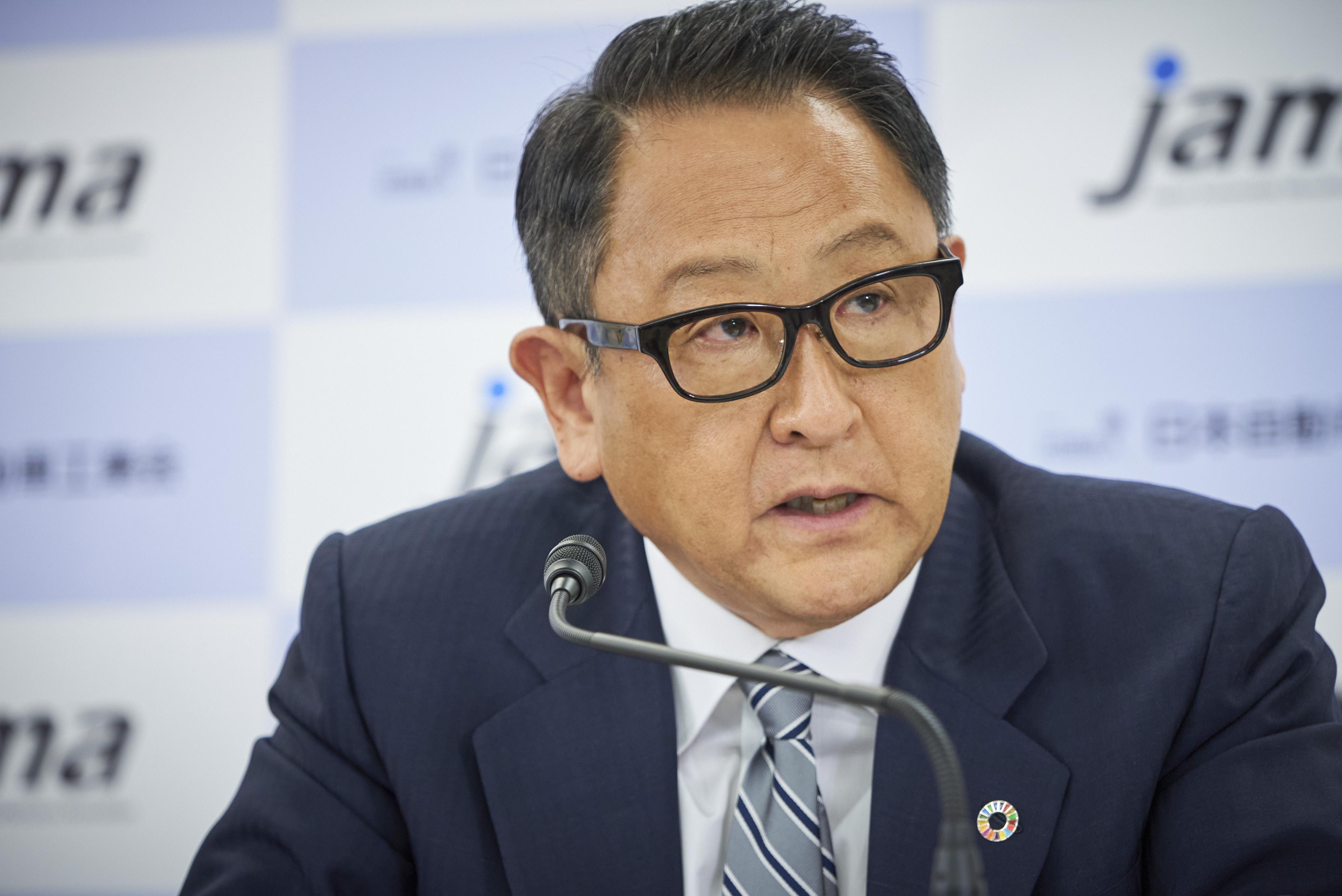
We have grown stronger together with everyone in the automotive industry. The many companies referred to as “small and micro-sized enterprises” have talented people who have sustained Japanese manufacturing and many excellent technologies that are yet to fully blossom.
Expanding our technological options based on what we have accumulated while leaving no one behind-that is the path we want to take to achieve carbon neutrality. It will not be an easy one, but I believe that it is my role, as JAMA chairman, to lead the efforts by showing this mission and to ensure that the hard work of the people in the genba will contribute to a better future.
I believe that the automotive industry has played a role as a “pacemaker” for the economic recovery during the COVID-19 crisis. For carbon neutrality as well, I want the automotive industry to play a significant role by fully leveraging the potential of the 5.5 million people working in the industry. I would like to ask for your continued kind support for all our future endeavors.
During the previous press conference in April, Akio talked about a unique path for Japan to achieve carbon neutrality.
Various means can be considered to achieve carbon neutrality. In Japan, many innovative technologies have yet to fully bloom, and many people play an important role in supporting manufacturing. The Japanese automotive industry has become stronger as such a team. That is why Akio vowed in front of many reporters that it was his role, as JAMA chairman, “to lead efforts by showing this mission and to ensure that the hard work of people in the genba will contribute to a better future”.
Make more use of the automotive industry
The press conference then moved on to a Q&A session. The first question was about the growth strategy recently announced by the Japanese government. In the growth strategy, numerical targets for infrastructure were included: 1,000 hydrogen stations and 30,000 quick chargers for electric vehicles by 2030.
After expressing his appreciation for the government’s inclusion of infrastructure development in its growth strategy, Akio had the following to say.
Akio
By all means, I want to avoid simply making installation the goal. If the number of units is the only goal, then units will be installed wherever it seems (easily) feasible, resulting in low utilization rates and, ultimately, low levels of convenience.
(That’s why) I would like the government to make a little more use of the automotive industry. Some cars already have connected technology and GPS. Our industry can identify where most electric vehicles drive. I think it is possible to prioritize where charging and hydrogen infrastructures are established.
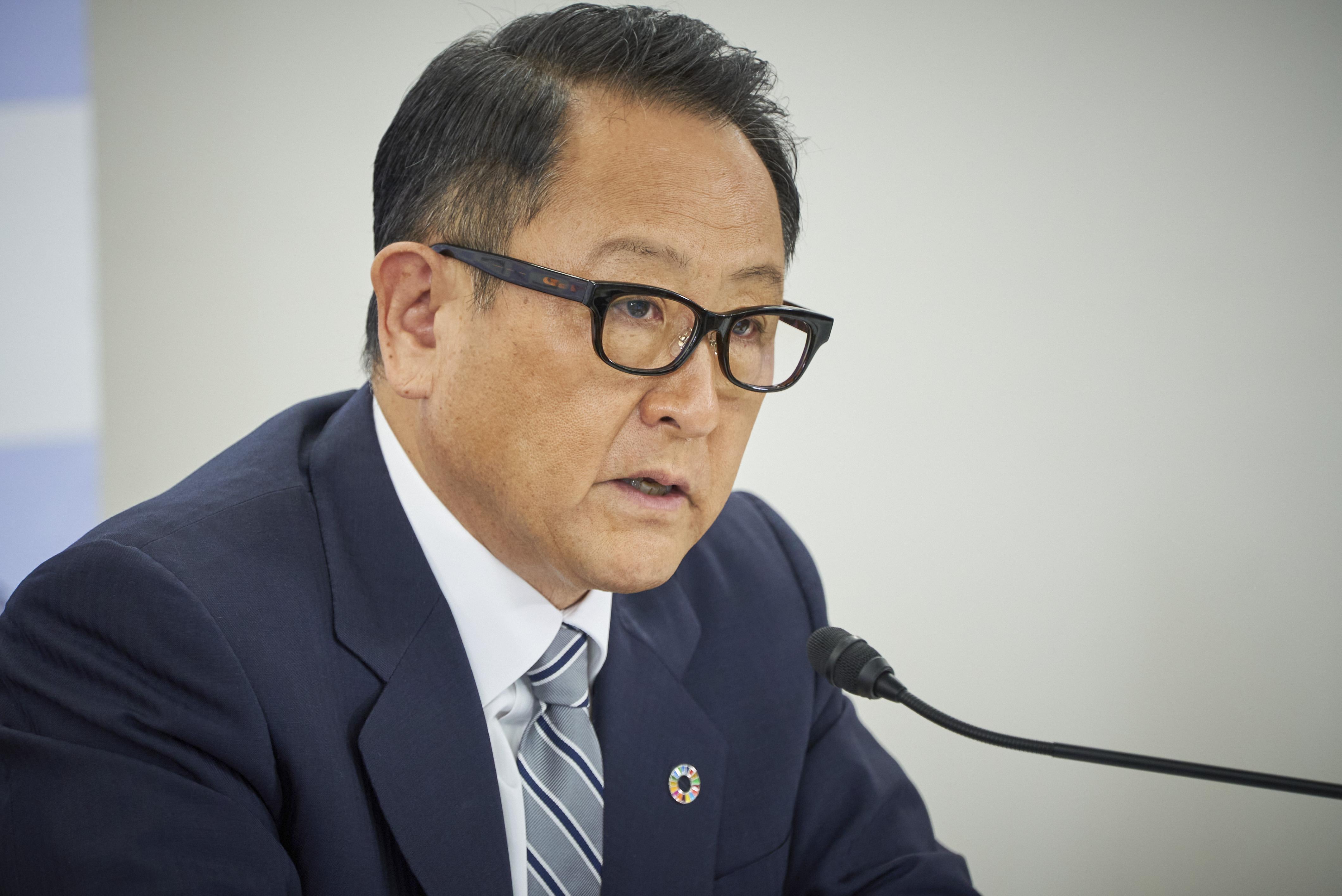
Automobiles, including motorcycles and commercial vehicles, are part of our daily scenery, making it easy to be aware of what they’re currently like because we can see them right in front of us.
Passenger cars, for example, are fully redesigned every five to seven years. That makes it easy to see step-by-step progress toward carbon neutrality.
Also, if you look at vehicle redesigns as having a “by when” date, parts and material manufacturers work to meet that date, making it easier to recognize the (degree of) realization of carbon neutrality and for the country to move forward.
Because the ripple effect of the automotive industry is large, I would like the government to make more use of our industry.
An industry that can make real contributions to the Japanese economy
The next question was about the role of the automotive industry in the Japanese economy.
The press conference, this time, included attendance by a JAMA vice chairman from the world of motorcycles and another from the realm of large commercial vehicles. Both motorcycles and large commercial vehicles face unique circumstances that differ from those of passenger cars, and unless the issues in each of those domains are overcome, carbon neutrality cannot be realized for the entire automotive industry.
Regarding motorcycles, Vice Chairman Hidaka explained that paths are being explored for ways to make two-wheeled motor vehicles, from small scooters to large touring motorcycles, carbon-neutral in a way that matches their respective characteristics.
As for large commercial vehicles, Vice Chairman Katayama, while touching on driver shortages and other issues in a sector that forms part of the infrastructure that supports distribution, talked about progress in efforts to find an ideal form for the future in the context of creating a larger group by going beyond the bounds of conventional frameworks.
And Akio had something to say, as well.
Akio
As both vice chairmen mentioned, the 5.5 million people in Japan’s automotive industry are working hard to survive. When we couldn’t make cars, we made protective masks or medical face shields. As such, we have continued to work while making the best use of the manufacturing skills that we have cultivated.

I think that we have been able to contribute to the economy so far even in this period of “with COVID” because we have always stayed on the move. As for how we intend to contribute to the Japanese economy moving forward, we are creating real jobs with 5.5 million people, making real capital investments, doing real sales, and carrying out real distribution.
Because “real” means that people are involved, by improving reality through genchi genbutsu (going to the source and finding the facts) approaches, I believe we will become more competitive and people will recognize our value.
The three men’s responses were filled with the pride of a key industry of Japan.
Responsibility as adults
When Akio was asked how he viewed the current COVID-19 situation in Japan, he replied as follows.
Akio
I see the current situation as an emergency. Because we are in such an emergency, I think that it is necessary to address it by quickly responding to changes as they occur.
It has already been more than a year since we first started to deal with COVID-19. Although there must have been much knowledge accumulated over this period, the situation has not improved much, and we do not know what kind of knowledge has been accumulated. Because of that, people are experiencing days of dissatisfaction and anxiety. I think that is the reality now.
Amid such, before commenting as an executive in the business world, I would like—as an adult—to turn attention to the children. Over the past year, children have not been able to play outside as much as they would like. They have not even been able to sing their school song (which a school custom in Japan). And there have been no school trips for them, either.
As an adult, I believe that is not desirable for children, who will create the future, to spend an important period for their growth under such great restriction.
I believe that we should take responsibility as adults. We have the opportunity to speak out and complain, but children are afforded no such thing.
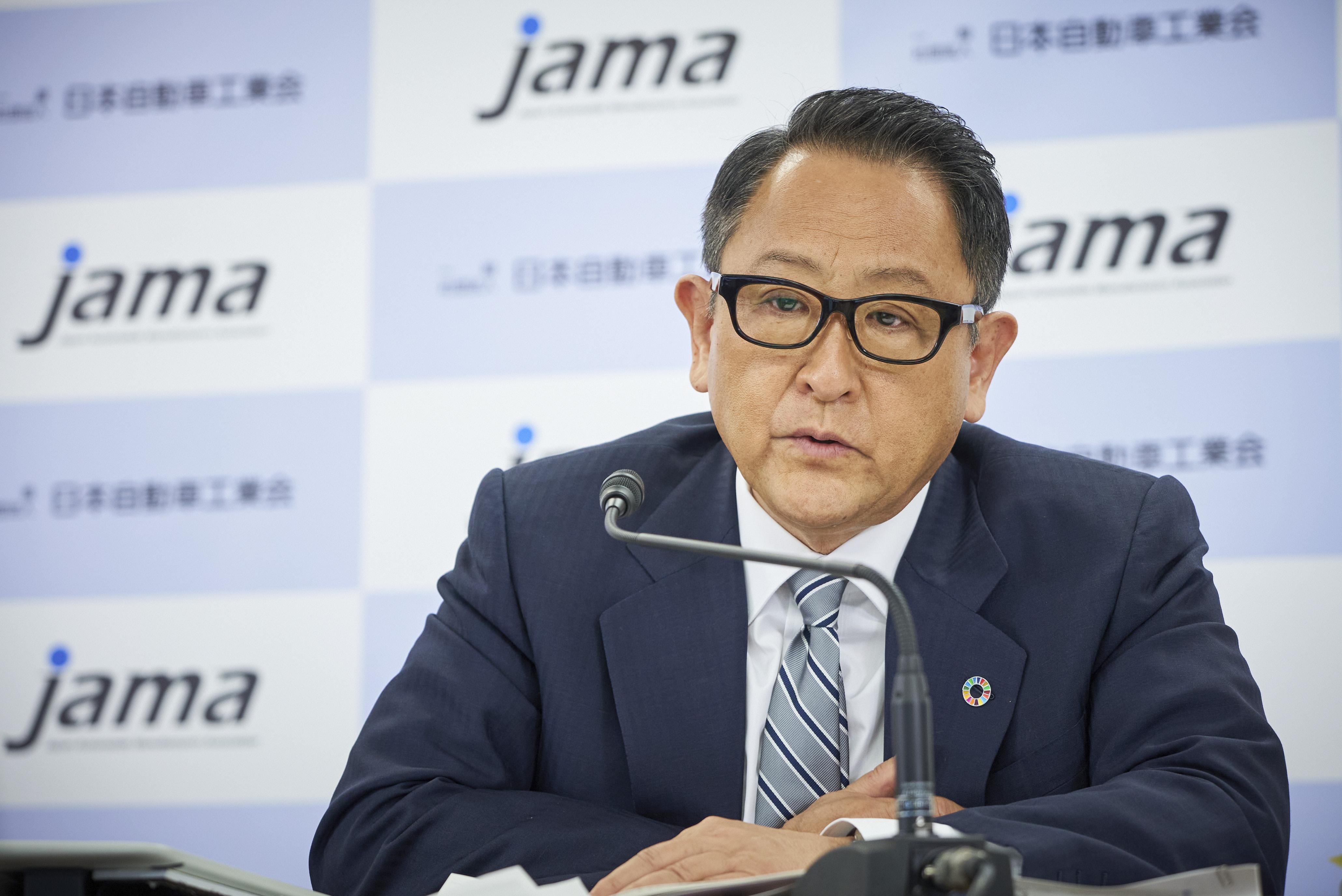
So that the children of today will not have to say after they get older: “It’s because of them that we are now like this”, I believe that adults now are required to take action.
Over the past year, the look of our communities and our lives greatly changed. Some people have lost their jobs and some people now are paid less. Those are some of the realities.
I don’t think anyone can foresee when and how the days before COVID-19 will return. But I think that it is precisely at times like these that we adults need to show words and actions, leadership, and caring explanations that help people look forward, while approaching the hearts of those who are having a hard time.
The automotive industry, too, has suffered all kinds of hardships over the past year, such as the COVID-19 crisis and the semiconductor shortage. However, people in the industry were able to move quickly because they had a clear mission of what they should do.
Mission-driven organizations are unshakable. And they have the strength to overcome crises. Amassing the power of each person among 5.5 million people and many companies to move the future... Such was the kind of strong will JAMA demonstrated at the press conference.
And Akio’s comments about children may have been convincing to many since “responsibility as adults” would involve mostly everyone working in society.
It is probably safe to say that thoughtfulness for children rarely comes up at press conferences held by industry groups. But, on an occasion for talking about JAMA’s initiatives driven by its mission, such as actions having to do with carbon neutrality, Akio’s eyes must have been inevitably on the future, as well as on the children who will play a central role in creating the future.
On this day, Akio wore an SDG lapel pin. Taking action that the children will appreciate, rather than blame someone for, when they become adults—that is exactly part of the SDGs’ perspectives, which aim to realize a sustainable society without leaving anyone behind. Perhaps, it is time for all adults to think about what kind of mission they should be driven by.

